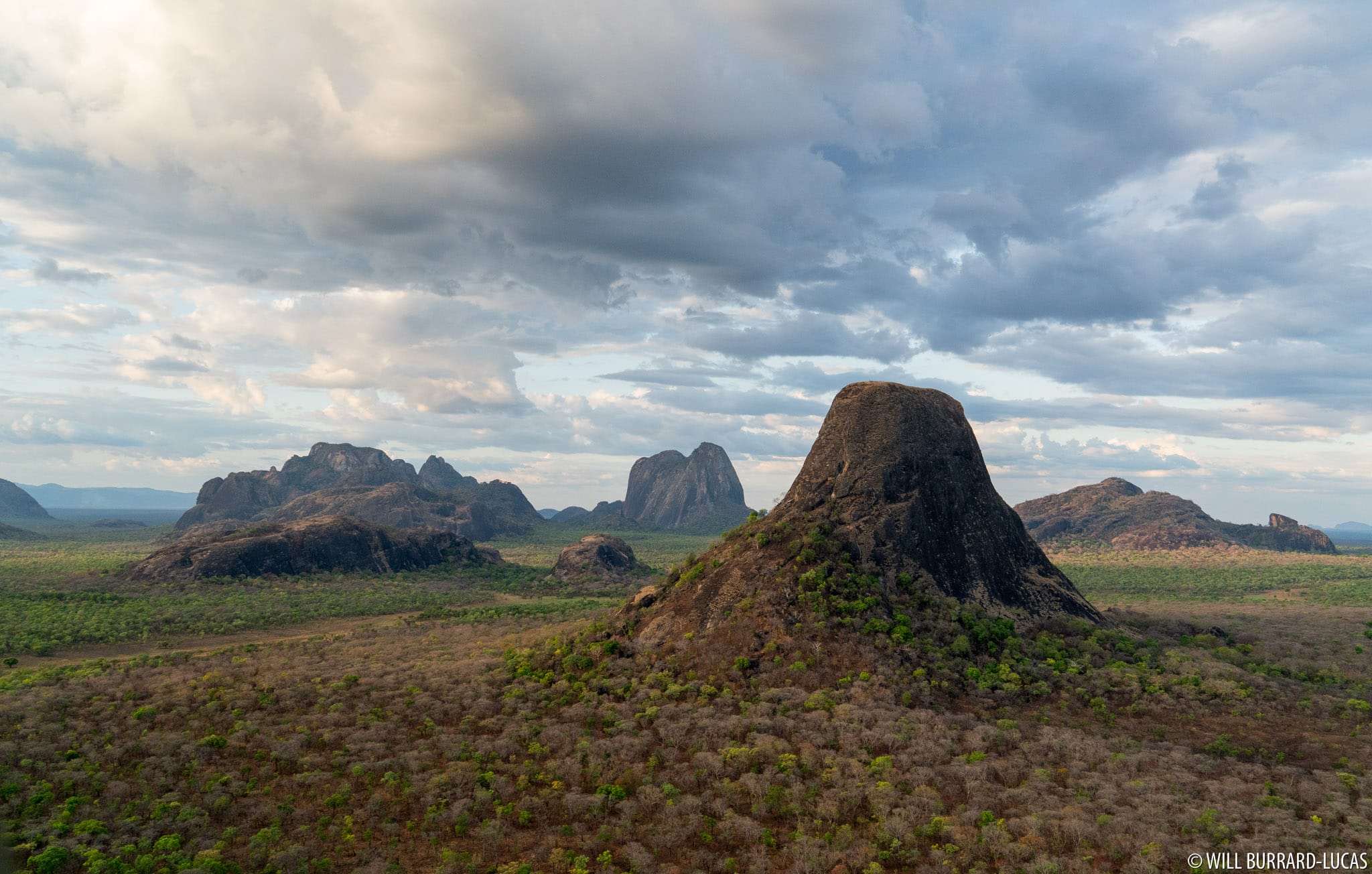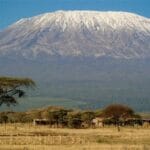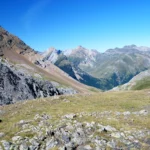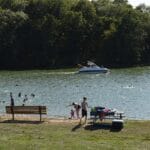Lake Niassa, a jewel nestled in the East African Rift Valley, captivates with sapphire waters meeting emerald shores. Known locally as “The End of the World,” this biodiverse hotspot teems with over a thousand fish species, a vibrant ecosystem attracting scientists and adventurers alike. Join us as we explore this hidden treasure, where nature thrives and culture flourishes.
Unveiling Niassa’s Wonders
Lake Niassa, sometimes referred to as Lake Malawi, depending on the geographical context, is a natural wonder of significant proportions. This shimmering expanse stretches across Mozambique, its waters reflecting the sky and holding a world of secrets waiting to be discovered.
A Symphony of Life
Niassa Lake is a biodiversity hotspot, renowned for its astounding array of cichlid fish. Over a thousand species, a kaleidoscope of colors and patterns, thrive in these waters—a spectacle that continues to fascinate researchers and divers. This vibrant ecosystem isn’t merely beautiful; it plays a vital role in the lake’s overall health, a delicate balance that scientists are still working to fully understand.
The Lake’s Embrace
Beyond its ecological significance, Niassa Lake is the lifeblood of the surrounding communities. It provides sustenance, water for daily life, and a vital transportation route, linking villages and fostering trade. The lake is deeply interwoven with the cultural fabric of the region, its stories and traditions passed down through generations, intrinsically linked to the rhythmic pulse of the water.
Whispers of the Past
Niassa Lake’s history is as deep as its waters. From its formation within the East African Rift Valley to the arrival of European explorers, like those who charted the course to Mount Waiʻaleʻale, the lake has witnessed the passage of time. The MV Chauncy Maples, a historical vessel, once plied these waters, bringing aid and religious missions to the lakeshore communities, leaving its mark on the lake’s narrative.
Shared Waters, Shared Future
Niassa Lake’s shores touch not only Mozambique but also Malawi and Tanzania. This shared ownership presents both opportunities and challenges. While it fosters the potential for collaborative resource management and regional prosperity, it also necessitates careful navigation of territorial boundaries and shared responsibilities, underscoring the importance of international cooperation.
Culture: Rooted in the Waters
For the lakeside communities, Niassa Lake isn’t just a body of water; it’s an intrinsic part of their identity. It shapes their daily routines, traditions, and spiritual beliefs, weaving itself into the very fabric of their existence. To fully appreciate Niassa Lake, one must experience the rich cultural tapestry of the people who call its shores home.
A Paradise Beckons
Niassa Lake offers a unique escape, a journey into the heart of unspoiled Africa. Imagine kayaking across its serene surface, the sun warming your face, and diving into the cool depths, exploring its kaleidoscopic underwater realm. Or perhaps simply relaxing on the shore, absorbing the tranquility and stunning vistas. The lake is an adventurer’s dream and a photographer’s paradise.
Guardians of the Lake
As Niassa Lake’s popularity grows, so too does the responsibility to protect its fragile ecosystem. Sustainable tourism practices, respectful of the environment and the local communities, are paramount to ensure that this natural wonder remains pristine for generations to come, much like the efforts to preserve the challenging beauty of Nanga Parbat Mountain Pakistan.
Navigating a Changing World
Even a place as magnificent as Niassa Lake isn’t immune to the effects of climate change. Rising temperatures and altered rainfall patterns may disrupt the delicate balance of its ecosystem. Ongoing research is crucial to understanding these potential impacts and developing strategies to mitigate them, ensuring the lake’s resilience in the face of a changing climate.
A Legacy for Tomorrow
Niassa Lake stands at a crossroads. Its future depends on responsible stewardship and collaborative efforts to protect its biodiversity, its cultural heritage, and its breathtaking beauty. By embracing sustainable practices and working together, we can ensure that this African paradise continues to thrive, inspiring awe and wonder for generations to come.
Why is Lake Niassa a Tourist Attraction?
Lake Niassa isn’t just a destination; it’s an experience. Where the vibrant hues of cichlids dance in crystalline waters, where ancient mountains meet soft sandy beaches, and where the rhythms of nature harmonize with the rich tapestry of local culture, Lake Niassa, also known as Lake Malawi, offers an escape unlike any other. But what exactly makes this lake so alluring?
An Underwater Eden
Imagine yourself floating in water so clear it feels like flying, sunlight revealing a hidden world teeming with over a thousand cichlid species. This vibrant underwater spectacle is one of Lake Niassa’s greatest draws, attracting snorkelers and divers from around the globe. But the cichlids are just the beginning; the lake supports a complex aquatic ecosystem, a delicate web of life that sustains the communities who depend on its bounty.
Beyond the Blue: A Tapestry of Landscapes
Lake Niassa offers a sanctuary of untouched beauty. Dramatic cliffs plunge into crystal-clear water, contrasting with inviting sandy beaches. Towering peaks of the Rift Valley escarpment frame the horizon, creating a breathtaking backdrop for kayaking, canoeing, or simply relaxing by the shore.
Culture and Nature Intertwined
Lake Niassa offers a unique opportunity to connect with the heart of Africa. Engage with local communities, learn their traditions, and witness the symbiotic relationship between humans and nature. Explore the Niassa National Reserve, where diverse land-based wildlife awaits. Lichinga, the provincial capital, serves as a gateway to the lake and a hub for organizing excursions.
The Journey to Paradise
Reaching Lake Niassa is an adventure in itself. Flights to Lichinga connect the region to the wider world. From there, four-wheel-drive vehicles navigate the roads leading to the lake. The intentionally limited tourist infrastructure preserves the region’s unspoiled character, with comfortable lodges and campsites available, all focused on sustainable tourism.
| Aspect | Description | Tourist Appeal |
|---|---|---|
| Biodiversity | Over 1,000 cichlid species, unique ecosystem | Snorkeling, diving, wildlife observation |
| Scenery | Pristine waters, cliffs, beaches, Rift Valley views | Breathtaking landscapes, kayaking, relaxation |
| Culture | Rich local traditions, Niassa National Reserve | Cultural immersion, wildlife viewing |
| Accessibility | Flights to Lichinga, 4×4 access | Reachable despite remote location |
| Sustainability | Limited infrastructure, focus on preservation | Eco-conscious travel |
Lake Niassa offers a remarkable blend of adventure, natural wonder, and cultural immersion. It’s a place where you can disconnect from the ordinary and reconnect with the extraordinary. While research continues to unravel the complexities of its ecosystem and the long-term impacts of tourism, one thing remains certain: Lake Niassa is a destination that captivates and inspires.
What is the Cleanest Lake in Africa?
Lake Niassa, also known as Lake Malawi or Lake Nyasa, is often touted as one of the cleanest lakes in Africa. While the title of “cleanest” is difficult to definitively award without a standardized scientific measurement across all African lakes, Niassa’s remarkable clarity is undeniable. Many visitors describe the water as incredibly clear, almost like looking through liquid glass. This clarity is likely due to a combination of factors.
The lake’s location in the East African Rift Valley contributes significantly to its cleanliness. The valley acts as a natural filter, purifying the water over millennia. The immense size of Lake Niassa, the fourth largest freshwater lake globally by volume, further contributes to this purity by diluting any pollutants that may enter. The lake’s substantial depth also contributes to its stable water quality.
The surrounding geology may also play a role. The rocks and soil surrounding the lake could contribute minerals that enhance water clarity, although further research would be needed to confirm this theory. This clarity, combined with the abundant sunlight reaching the lake’s depths, likely supports the thriving biodiversity, including its famed cichlid population.
However, even this pristine environment faces challenges. Growing human populations around the lake pose a threat, with agricultural runoff, deforestation, and other human activities introducing pollutants into the water. While these impacts may seem minor at present, they could gradually degrade the delicate ecological balance.
Protecting Lake Niassa requires a concerted effort. As a shared resource between Mozambique, Malawi, and Tanzania, cross-border collaboration is vital. Ongoing research into sustainable management practices is essential to address these emerging threats. So, while the “cleanest lake” debate continues, Lake Niassa’s exceptional clarity and vibrant ecosystem remain undeniable. The focus now should be on ensuring its continued health and preservation.
Is Lake Malawi Safe to Swim in?
Lake Malawi, with its inviting clear waters, beckons swimmers. However, it’s essential to understand the potential risks and take necessary precautions before taking a dip.
Bilharzia: A Precaution, Not a Prohibition
Bilharzia, or schistosomiasis, is a parasitic infection contracted through contact with contaminated freshwater. While it shouldn’t prevent you from swimming, awareness and precaution are key. Post-swim treatment for bilharzia is strongly recommended, even if you don’t experience symptoms. Consulting your doctor before and after your trip is always advisable for personalized advice.
Water Quality: A Shifting Landscape
Lake Malawi’s water quality can fluctuate due to rainfall and runoff. This runoff can introduce pollutants, potentially increasing the risk of illness. Carefully selecting your swimming spot is crucial, as some areas might be cleaner than others.
Smart Swimming: Safety Tips
Swimming in Lake Malawi, like any natural body of water, comes with inherent risks that can be mitigated with sensible precautions. Wearing a lifejacket, swimming with a buddy, being mindful of boat traffic, and sticking to designated swimming areas are all recommended.
Finding Your Ideal Spot
Lake Malawi National Park offers several lifeguarded beaches, providing a safer swimming environment. Popular spots include Cape Maclear, Livingstonia Beach, Senga Bay, Chintheche, Kande Beach, Makuzi Beach, Ndokera Beach, as well as islands like Likoma, Mumbo, and Chizumula. However, even in designated areas, some level of risk always exists.
Swimming in Lake Malawi can be a safe and enjoyable experience with the right precautions. Be aware of potential hazards, take practical steps to stay safe, and consult your doctor for personalized advice. By combining informed decision-making with a sense of adventure, you can fully appreciate the beauty of Lake Malawi while safeguarding your health.
- Unveiling the Enigma: Mansoureh Khojasteh Bagherzadeh’s Public Appearances & Private Life in Iran - July 18, 2025
- Unveiling the Mystery: Mansoureh Khojasteh Bagherzadeh’s Husband: A Rare Glimpse into a Private Life - July 18, 2025
- Unveiling Masoud Khamenei’s Mother: Power, Influence, and Iran’s Future - July 18, 2025

















1 thought on “Niassa Lake: Mozambique’s Untamed Paradise – A Journey Through Biodiversity and Culture”
Comments are closed.